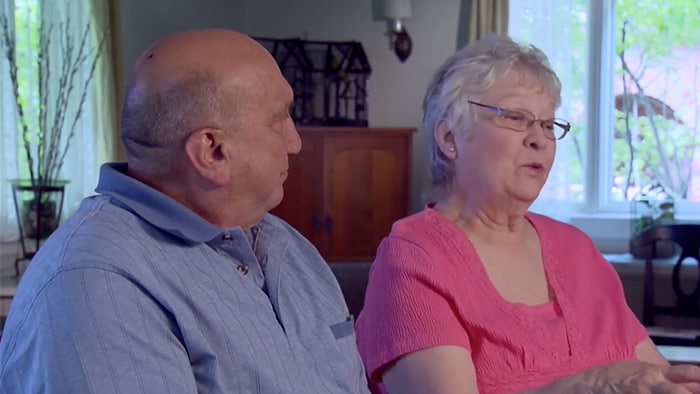See what others are saying about sleep apnoea
If you have sleep apnoea – or think you might – you’re not alone. Hear from others who have been where you are right now. Watch the videos below to learn about their journeys: getting diagnosed, what adjusting to therapy is like for them and their loved ones, and the life-changing results. Get the most out of your treatment options in our You have sleep apnoea, now what? brochure.

Find out if you have symptoms of sleep apnoea
Snoring could be more than annoying – it could be a danger to your health. Take our clinically validated, 9-question quiz to find out if you’re at risk.
All about sleep apnoea therapy
Learn from other users about how to make the most out of your therapy and get back to living your life to the fullest.
Starting treatment Recently diagnosed people share how they dealt with the transition to PAP—and many saw results faster than they thought possible.
Getting used to a new routine Getting fully comfortable with sleep therapy masks and devices can seem intimidating. Here’s some insight into what has worked well for others.
Living well with sleep apnoea PAP users look back on when therapy became a familiar—and welcome—part of their overnight routines.
Encouragement If you think you might have sleep apnoea, it’s important to take steps to find out. Hear about how you can check with your doctor to learn more.
Sleep apnoea therapy on the go
Travelers share how taking PAP on the road—and through airport security—can be a smooth ride.
Adjusting your mask: how-to videos
See how to adjust leaks on your DreamWear Nasal.
See how to adjust leaks on your DreamWear Gel Pillows.
See how to adjust leaks on your DreamWear Full Face.
Insight and support:
Check out our blog for ideas and information about thriving with sleep apnoea, so you can easily manage your condition and live the life you want.
Frequently asked questions
- What are the benefits of regular usage of PAP therapy?
-
Most PAP users who remain committed to treatment enjoy:
- Increased energy and attentiveness
- Fewer morning headaches
- Reduced irritability
- Improved memory
- Increased ability to exercise
- Lower blood pressure
- Decreased risk of strokes and heart attacks
- Increased effectiveness at home and at work
- Improved overall quality of life
- When should I start feeling better after beginning to use my CPAP?
-
Most people begin to feel better within the first week of use, though for some people it may take a little longer.
- What if I still snore while using my CPAP?
-
Snoring while on CPAP should not happen. If it does, contact your doctor. Your pressure level might need to be adjusted.
- What if I lose or gain weight over the course of my treatment or my old symptoms reappear?
-
You may need to have your CPAP pressure level adjusted. Contact your doctor.
- If I need to be hospitalized for any reason, should I take my device with me and use it at night?
-
Yes. Also, if you are having surgery, it is important to tell the surgeon and the anesthesiologist that you are using CPAP at home. You should also inform the doctor treating you for sleep apnoea that you are going into the hospital.
- I just can’t seem to adjust to my CPAP therapy. What should I do?
-
Most people will adjust to CPAP in one to two weeks. Occasionally, it may take a little longer if, for example, you are very sensitive to the feel of the mask on your face or the sound of the device. Call your homecare provider or your prescribing physician if you continue to have problems beyond two weeks. Ask if you are eligible to try a bi-level or auto-adjusting device.

Are you a sleep professional?
References 1. DreamMapper is available currently in the US, Canada, Australia, New Zealand and certain international locations. For informational purposes only, not to replace physician's directions.








